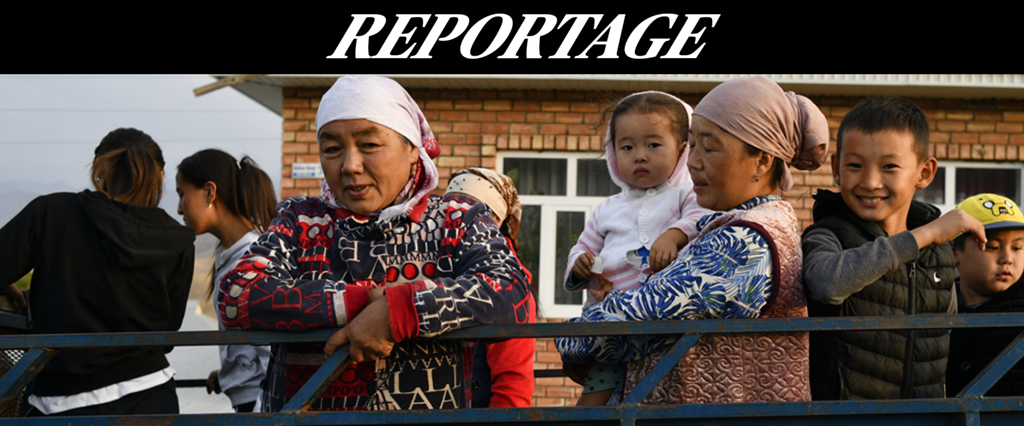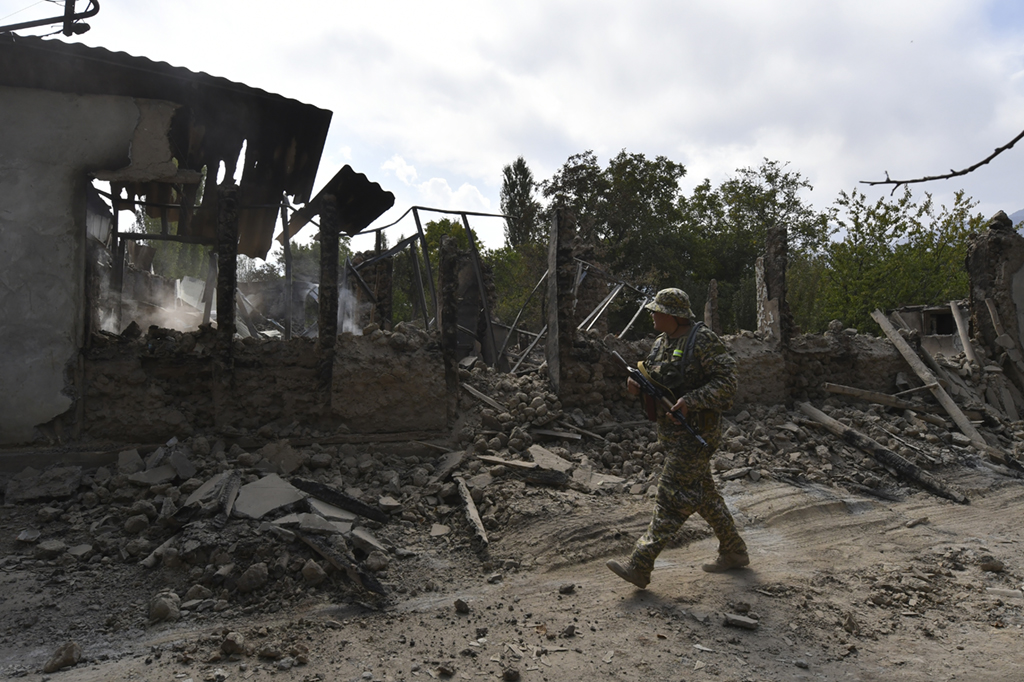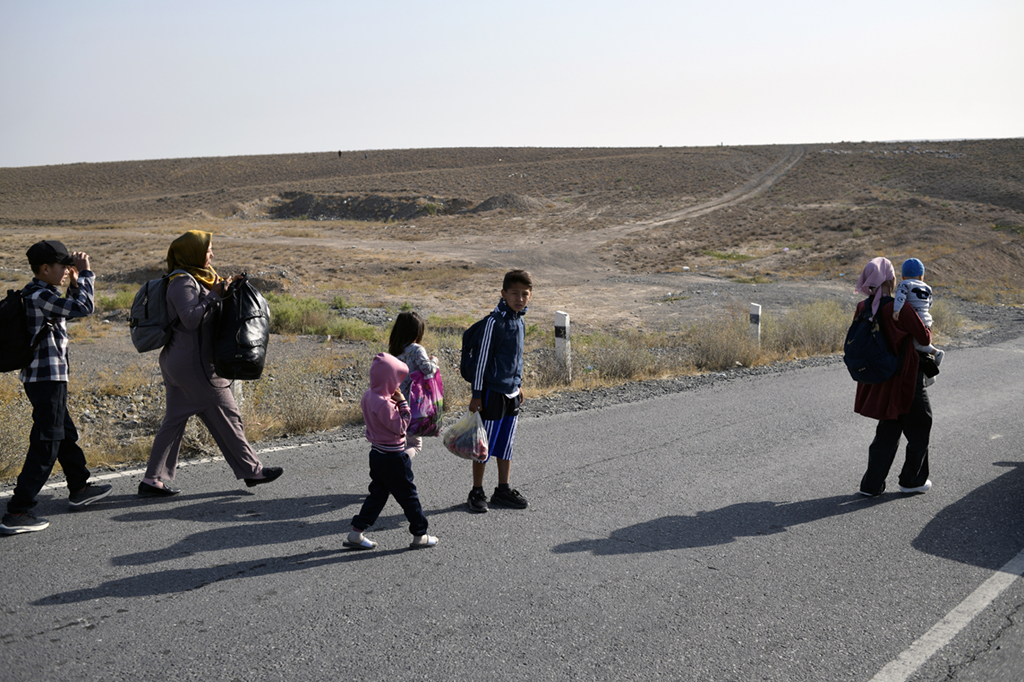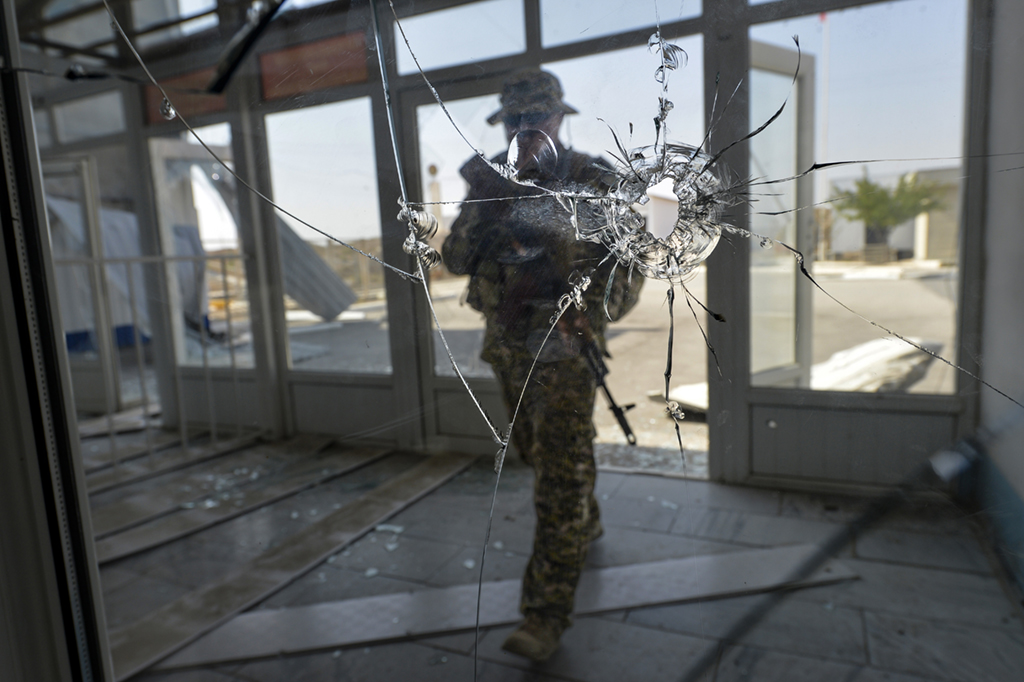
The control over natural resources is the smoking gun behind the flared border conflict between Tajikistan and Kyrgyzstan. It’s not the first time that two Central Asian neighbors clash — nor the first time that the border demarcations performed by then-Soviet leader Joseph Stalin in the 1920s have given rise to armed disagreements exploited by totalitarian regimes in a politically infected neighborhood.
TAJIKISTAN/KYRGYZSTAN | It all started at dawn on September 16. During the morning prayer. Then Tajik forces opened fire and launched the latest edition of a more than 30-year-spanning border conflict with neighboring Kyrgyzstan, regarding disputed land in the Batken region.
A week of intense fighting then followed — with the usage of drones, rockets, and artillery fire — which claimed over one-hundred lives, including 37 civilians and at least four children. Over 136,000 Kyrgyz civilians were forced to abandon their homes and many no longer have any homes to return to. On both sides of the border, thousands have succumbed to internal displacement.
Politically, the bloodshed and destruction led nowhere. Geographical positions remain unchanged in the Batken region, a historically isolated and sparsely populated valley situated some 400 meters above sea level, in an oasis that was part of the ancient Silk Road and later, during the 20th century, a vital commodity garden for the Soviet Union, with its cotton plantations, wheat production, and vegetable groves.
Political game for domestic gain
As gunpowder smoke clears and the debris of destroyed homes is collected, the respective governments of Dushanbe and Bishkek remain busy pointing fingers at one another. Analysts raise their hands and state the fact that the roots of the conflict are deeply entrenched in a dense geopolitical bush.
Temur Umarov, an expert on Central Asia and a fellow at the Carnegie Endowment for International Peace, states that although the bullets may be aimed at the neighbor on the other side of the border fence, the message of the conflict is primarily aimed at a domestic home, kept in political checkmate by ruthless leaders.
“This is an attempt of both Tajikistan and Kyrgyzstan to accumulate more support towards their political regimes while portraying the other side as an external threat that should lead to a more consolidated society inside of those countries and consolidate support around the political regimes,” he says.
Umarov also reminds, “This is not the first time that Tajikistan uses this kind of threat to create national support.”

Different maps
Tajikistan and Kyrgyzstan share a 971-kilometer-long border — of which 471 kilometers include territory that is claimed by both landlocked Central Asian nations. Both countries also base their conclusions on two completely different geopolitical maps: Tajikistan on a 1924 border demarcation, Kyrgyzstan on a 1958 ditto.
Whatever border you refer to in Central Asia, the drawn lines on the map were conducted by political pencils in Moscow, some 3,000 kilometers away from the mountains, rivers, natural resources, and people of Central Asia.
These are borders that also mostly embodied an administrative function in the Soviet Union which openly claimed there were no existing internal borders within the empire of the proletariat. An approach, and a reality, that later not merely came under scrutiny, but also became unsustainable. One example is Vorukh.
Exclaves of Stalin, cradles of conflicts
Vorukh is a village that is also an island. Any modern map displays Vorukh and its surrounding area of a few miles in each direction as an integrated part of Tajikistan — furthermore, it’s a cut-off appendix of the rest of the country, an exclave, swallowed by Kyrgyzstan.
Vorukh, and a handful of other exclaves in Central Asia, are consequences of the pencil strokes that Joseph Stalin made, while serving as a minority director in the Soviet Union in the making. Stalin himself never visited Central Asia, neither in the 1920s nor during the rest of his lifetime, but his drawn geopolitical lines on the Soviet map destined that ethnic minorities such as Kyrgyz, Tajiks, Turkmens, and Uzbeks woke up along borders that were drawn through communities that had been united communities for centuries.
“The way the Soviet Union organized industries, electricity generation and agricultural production in Central Asia was that they were all interdependent. The cynical conclusion would be to see it as a way of creating a weakness in that they were all dependent on one another, but a more benevolent conclusion is that this was the most logical way to organize things,” said Peter Leonard, experience reporter working in Central Asia and editor at Eurasianet, on the podcast “The Red Lines’” episode on Tajikistan.
Control over natural resources
Joseph Stalin’s incentives for the given and still existing boundaries have stirred up an intense debate among scholars. Each Central Asian republic became a vital part of the Soviet machinery: Kazakhstan (oil), Kyrgyzstan (coal and uranium), Tajikistan (gold and aluminum), Turkmenistan (cotton), and Uzbekistan (copper and natural gas). Access to natural resources, like water, was then shared under comprehensive land acquisition programs.
As a result of the border markings of the 1920s, it didn’t take long after Central Asia’s detachment from the Soviet bloc before land conflicts and border disputes erupted — hovering over control over natural resources.
Later, as the governments of Tajikistan and Kyrgyzstan cemented their respective independent narrative and economic models, there were suddenly positions to defend, and the border areas within the frame of the Batken region soon evolved into a proper powder keg.

“The Apricot War”
It wasn’t until 2004, though, that clashes around water wells and pastures gained any greater attention. Since “The Apricot War,” things have truly never been the same in the borderlands between Tajikistan and Kyrgyzstan.
In 2004, Tajik shepherds planted apricot trees on disputed land, which led to a tidal wave of patriotic neighborly anger and had Kyrgyz shepherds uprooting the newly planted tree rows. The affliction between the two nations has erupted in a series of violent cascades in the Batken region — in 2005, 2008, 2011, 2014, 2015, and 2021.
The 2021 fighting lasted three days in late April and early May and ceased without any political solution — but with 50 dead, several hundred wounded, and over 50,000 internally displaced.
Military escalation, reduced natural resources
A steady military and rhetoric escalation has paralleled eroded ecosystems and an increasingly erratic supply of groundwater sources and pastures.
“The situation on the border appeared a long time ago, during Soviet times, then it was not a question as they were all part of one country — but even then, they had some conflicts over land and resources, even during Soviet times,” states Temur Umarov. “Now, of course, it’s a question not only of resources but also about sovereignty and territorial integrity — and considering that both countries are developing their national identities around this question of independence, it has become much more important.”
A swift exit from the Soviet Union also dismantled numerous treaties, literally overnight, affecting mainly farmers and herders on both sides of the border. Albeit in different ways.
For Tajiks, there is a great shortage of pastures, and an informal market has thus been established in the Batken region where Kyrgyz cattle breeders “lease out” land at exorbitant prices — which is against Kyrgyz law that prohibits “foreign actors” from using the nation’s land.
“However, Tajik pastoral communities do not think of themselves as foreigners on these pastures, since these resources were used by their ancestors during the times of the Soviet Union,” writes Gulzana Kurmanalieva, a Kyrgyz agricultural economist attached to Naryn State University, in a study for L’europé en formation, published in 2018.
She adds, “In addition, Tajik pastoral communities believe that parts of these border grazing areas belong to Tajikistan. This assumption is understandable because Kyrgyz and Tajik border communities are lacking information on where the disputed areas are located.”
The conflict is further spiced by Kyrgyz border police, who earn pocket money confiscating Tajik cattle grazing on Kyrgyz lands.
“In order to release their livestock, Tajik herders have to pay a fee to border guards. This procedure is not written in the Kyrgyz Pasture Law from 2009 and is considered illegal,” states Gulzana Kurmanalieva.
Moscow, Lingering Master
Tajik and Kyrgyz governments deal with each other regularly and are both full members of the intergovernmental military alliance in Eurasia, The Collective Security Treaty Organization (CSTO), since 1994. Russia, due to its size, economy, and historical influence over its former Soviet subjects, has maintained its position not only in CSTO but as a power player in Central Asia.
Besides the flare-up in its Kyrgyz neighbor, the Tajik government has also faced domestic turmoil in its autonomous eastern outpost, Gorno-Badakhshan. In the mountainous region, high up in the Pamir Mountains close to the Chinese border, people have taken the streets to protest widespread corruption, police brutality, and rampant living costs. The Tajik President, Emomali Rahmon (who has served as the nation’s leader since the civil war in the 1990s) hasn’t hesitated to crack down on opposition and branded them as “terrorists.”
On September 14, the Russian Supreme Court followed suit and branded the Tajik Islamist party, IRPT, as a terrorist organization. During Tajikistan’s bloody civil war between 1992 and 1997, where approximately 200,000 people lost their lives, IRPT fought against the government forces that later emerged as winners.
The legal verdict in Moscow can be seen as part of a broader Russian aid package to the Tajik government. Russia has assisted Tajikistan by arresting and extraditing people from the Tajik opposition besides bloggers and local activists who now await legal charges in Tajikistan.

Water shortage
While the Tajik government remains preoccupied with repressing disobedient squats of the population, Kyrgyzstan has experienced massive uproars and protests in recent years following disputed elections that finally swept Sadir Japarov into the presidential office.
While both Presidents remain preoccupied with domestic clean-ups and the latest clashes in the Batken region, natural resources continue to — literally — slide out of their hands.
Tajikistan and Kyrgyzstan have joint custody of more than forty channels, some of which originate in Tajikistan and flow into Kyrgyzstan, and vice versa. Complaints have therefore been plenty throughout the post-Soviet years regarding sabotage and “confiscations” of water sources through irrigation systems.
“Water resources often serve as an instrument to put pressure on each other among the Tajik and Kyrgyz communities. Whenever there are other conflicts at the border territories, the communities block water canals to each other which causes new tensions and escalates the situation,” concludes Gulzana Kurmanalieva. “Whenever there are other conflicts at the border territories, the communities block water canals to each other which causes new tensions and escalates the situation.”
Nationalism – an obstruction
Gulzana Kurmanalieva also underlines the importance of a binding agreement between Tajikistan and Kyrgyzstan to define which land belongings, but also to ensure equal access to water.
Temur Umarov, an expert on Central Asia and a fellow at the Carnegie Endowment for International Peace, agrees — but foresees no current opening. “The main obstacle is the nationalistic rhetoric that they use to reach some domestic goals and portray each other as enemies. This is something that stops countries from getting to any kind of resolving of the problem,” says Umarov.
He adds, “And while we have those kinds of regimes, in both Kyrgyzstan and Tajikistan, I don’t see any sign of development of this issue.”
“Compromise signals weakness”
When it comes to untying the historical knots in the border conflict with Kyrgyzstan,
It ought to be clear to both parties in the conflict that the current stance, with regular firefights, deaths, and displacement, isn’t sustainable. For anyone. Geopolitical circumstances and domestic priorities, on the other hand, offer minimal room for a compromise.
“Territorial disputes might be resolved, they can be resolved, and we’ve seen that across the world and in Central Asia, but it’s impossible to do while you have, on both sides, nationalistic regimes that from time to time use very ultra-patriotic ideology and rhetoric,” says Temur Umarov. “While you have those leaders, who base their power on the question of nationality, for them it will be impossible to solve these disputes.”
Territorial disputes are only solved when there’s a middle ground to strive for, and between two parties who are ready to give up some of the lands to the other side.
“This would definitely be seen as a kind of weakness — so none of the leaders in either Tajikistan or Kyrgyzstan would be willing to go for it,” concludes Temur Umarov.


